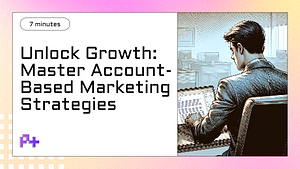What is Inbound Marketing?
Inbound marketing is a strategic approach that focuses on attracting customers through valuable content and interactions, rather than traditional outbound marketing techniques like cold calling or direct mail. At its core, inbound marketing is about creating meaningful connections with potential customers by providing them with the information they need when they need it. This method employs a variety of tactics, including content marketing, social media engagement, search engine optimization (SEO), and email marketing, all designed to draw in prospects and nurture them through the buying process.
One of the key principles of inbound marketing is understanding the buyer’s journey, which consists of three stages: awareness, consideration, and decision. During the awareness stage, potential customers recognize a problem or need. In this phase, inbound marketing strategies focus on providing informative blog posts, videos, and guides that address these issues. As prospects move to the consideration stage, they start comparing different solutions. Here, businesses can offer webinars, case studies, and detailed product descriptions to help guide their decision-making process. Finally, in the decision stage, effective inbound marketing tactics might involve personalized email campaigns or testimonials to encourage a purchase.
The benefits of inbound marketing are numerous. First, it typically costs less than traditional marketing methods and often results in higher conversion rates. By attracting interested leads through valuable content, businesses can build trust and credibility over time. Moreover, inbound marketing is highly measurable; tools like Google Analytics and CRM software can track the performance of campaigns, helping marketers refine their strategies. Overall, inbound marketing not only enhances brand visibility but also fosters long-term relationships with customers, making it an essential strategy in today’s digital landscape.
Inbound Marketing in the AI era - What will change?
As we navigate the rapidly evolving landscape of digital marketing, inbound marketing is undergoing significant transformations due to advancements in artificial intelligence (AI). These changes promise to enhance how businesses attract, engage, and delight their customers. One of the most notable shifts is the increasing reliance on AI-driven analytics and insights. Marketers can now leverage AI tools to analyze vast amounts of data, allowing for more precise targeting and personalization. This means that businesses can create content that is not only relevant but also tailored to the specific needs and preferences of their audience. As a result, the effectiveness of inbound marketing strategies is set to increase dramatically.
Another impactful change is the rise of AI-powered chatbots and virtual assistants, which are revolutionizing customer engagement. These tools enable businesses to provide real-time support and personalized interactions, enhancing the user experience. For example, chatbots can handle common inquiries, guide users through the buyer’s journey, and even recommend products based on previous interactions. This level of personalization fosters stronger relationships with customers and aligns perfectly with the principles of inbound marketing, which emphasize attracting customers through valuable content and meaningful interactions rather than intrusive ads.
Finally, the integration of AI into content creation and curation is set to redefine how inbound marketing campaigns are executed. AI tools can help marketers identify trending topics, optimize content for SEO, and even generate high-quality articles and social media posts. By automating these processes, businesses can focus more on strategy and creativity, ensuring their inbound marketing efforts remain innovative and effective. As AI continues to evolve, we can expect inbound marketing to become more efficient and impactful, ultimately leading to higher conversion rates and stronger customer loyalty.
How to differentiate yourself using Inbound Marketing
Differentiating yourself in a crowded market can be a daunting task, but inbound marketing offers a powerful strategy to stand out and attract your ideal customers. Unlike traditional marketing methods that interrupt potential customers, inbound marketing focuses on creating valuable content and experiences tailored to your audience's needs. By leveraging techniques such as SEO, content marketing, social media engagement, and personalized email campaigns, you can build a strong brand presence that resonates with your target market. This approach not only enhances your visibility but also fosters trust and loyalty among your audience.
To effectively differentiate yourself using inbound marketing, it’s crucial to understand your audience. Conduct thorough market research to identify the pain points, preferences, and behaviors of your potential customers. Once you have a clear picture of your audience, create high-quality, relevant content that addresses their specific needs. This could include blog posts, how-to guides, videos, or infographics that provide solutions and insights. By consistently delivering valuable content, you position your brand as an industry expert and thought leader, making it easier for potential customers to choose you over competitors.
Moreover, leveraging data analytics can significantly enhance your inbound marketing strategy. Use tools like Google Analytics and social media insights to track your audience's interactions with your content. This data not only informs you about what works but also helps you refine your strategies to better meet your audience's expectations. Additionally, consider incorporating personalized marketing tactics, such as tailored email campaigns based on user behavior or segmenting your audience for more targeted messaging. By focusing on personalization and continuous improvement, you can create a unique inbound marketing experience that truly differentiates your brand in the marketplace.
How does Inbound Marketing work?
Inbound marketing is a strategic approach that focuses on attracting customers through valuable content and experiences tailored to their needs. Unlike traditional marketing methods that often interrupt potential customers with ads, inbound marketing seeks to engage them by providing relevant information at the right time. This method revolves around four key stages: attract, convert, close, and delight. Each stage plays a critical role in transforming strangers into customers and ultimately into brand advocates.
The first stage, attract, involves drawing in visitors through high-quality content such as blog posts, videos, social media posts, and search engine optimization (SEO). By utilizing keywords and phrases that potential customers are searching for, businesses can position themselves as thought leaders in their industry. This content should answer common questions, solve problems, and provide insights that resonate with the target audience. Once these visitors are engaged, the next step is to convert them into leads. This is typically done through the use of calls-to-action (CTAs), landing pages, and lead magnets like eBooks or webinars. The goal is to collect contact information from interested visitors, allowing for further nurturing.
After converting leads, the focus shifts to the close stage, where businesses use email marketing and customer relationship management (CRM) tools to build relationships and guide prospects toward making a purchase. Finally, the delight stage emphasizes the importance of customer satisfaction and retention. By continuing to provide valuable content and support, businesses can turn customers into loyal advocates who will promote the brand through word-of-mouth and referrals. In summary, inbound marketing is a holistic strategy that emphasizes relationship-building and customer-centricity, creating a sustainable cycle of growth for businesses.
How to get started with Inbound Marketing?
Getting started with inbound marketing involves a strategic approach that centers around attracting, engaging, and delighting your customers. The first step is to define your target audience. Understanding who your ideal customers are will help tailor your content and marketing efforts. Create buyer personas that include demographic information, interests, pain points, and buying behaviors. This foundational step ensures that your inbound marketing efforts are focused and relevant, increasing the likelihood of converting leads into customers.
Once you have a clear picture of your audience, the next phase is to create valuable content that addresses their needs and interests. This can include blog posts, eBooks, infographics, videos, and podcasts. The key is to provide content that educates, informs, and entertains, positioning your brand as a trusted resource. Incorporate SEO best practices by using relevant keywords, including your main keyword inbound marketing, in your content. Additionally, optimize your website's structure for better user experience and search engine visibility, ensuring that your content is easily accessible to your audience.
Finally, to effectively engage with your audience, utilize social media platforms and email marketing. Share your content across social channels, encouraging interaction and feedback. Email marketing can nurture leads by providing personalized content based on their behavior and interests. Monitor your results through analytics tools to track the performance of your inbound marketing efforts. This ongoing evaluation will help you refine your strategies, ensuring that you continue to attract and convert your target audience effectively. By following these foundational steps, you can successfully embark on your inbound marketing journey and cultivate lasting relationships with your customers.



